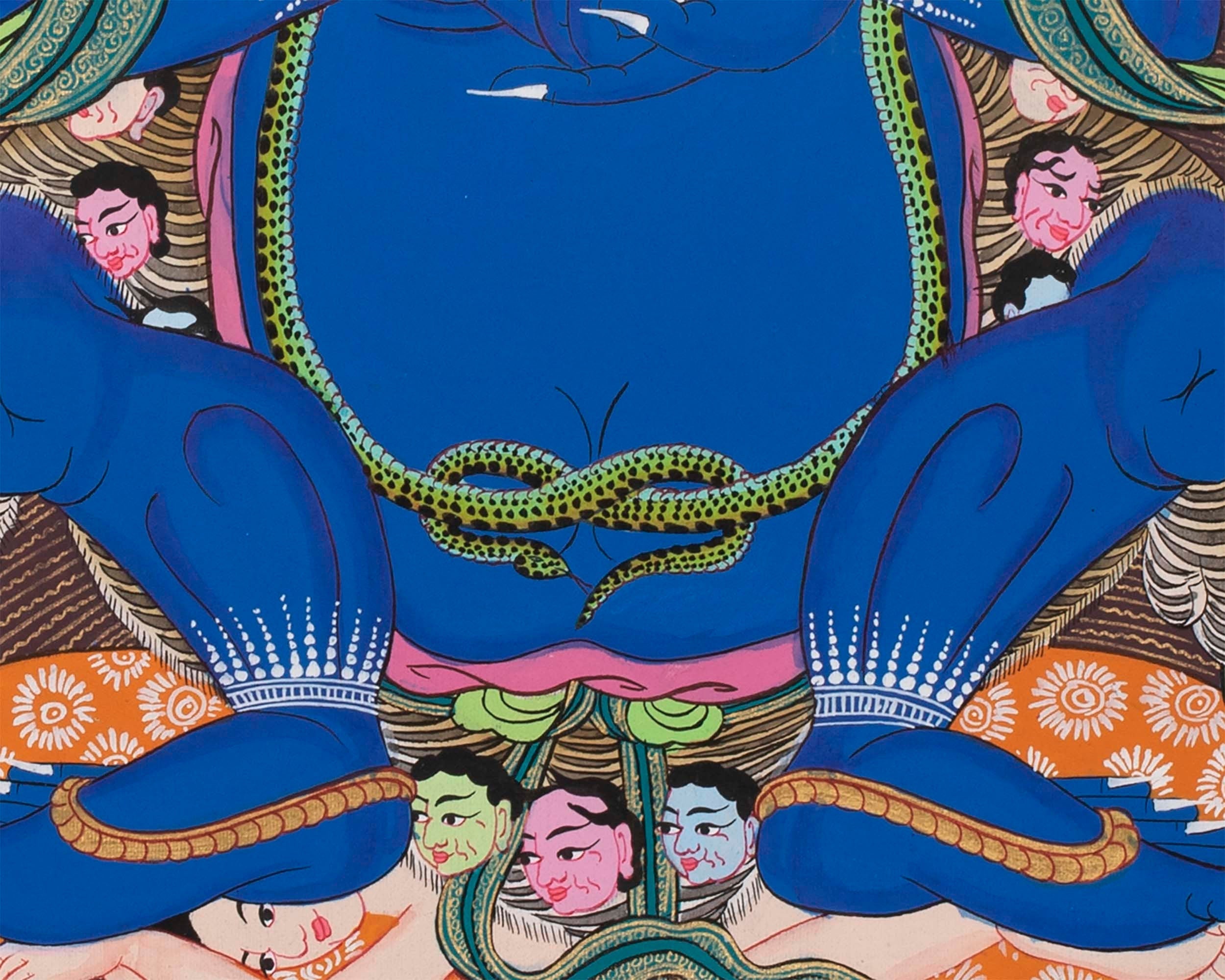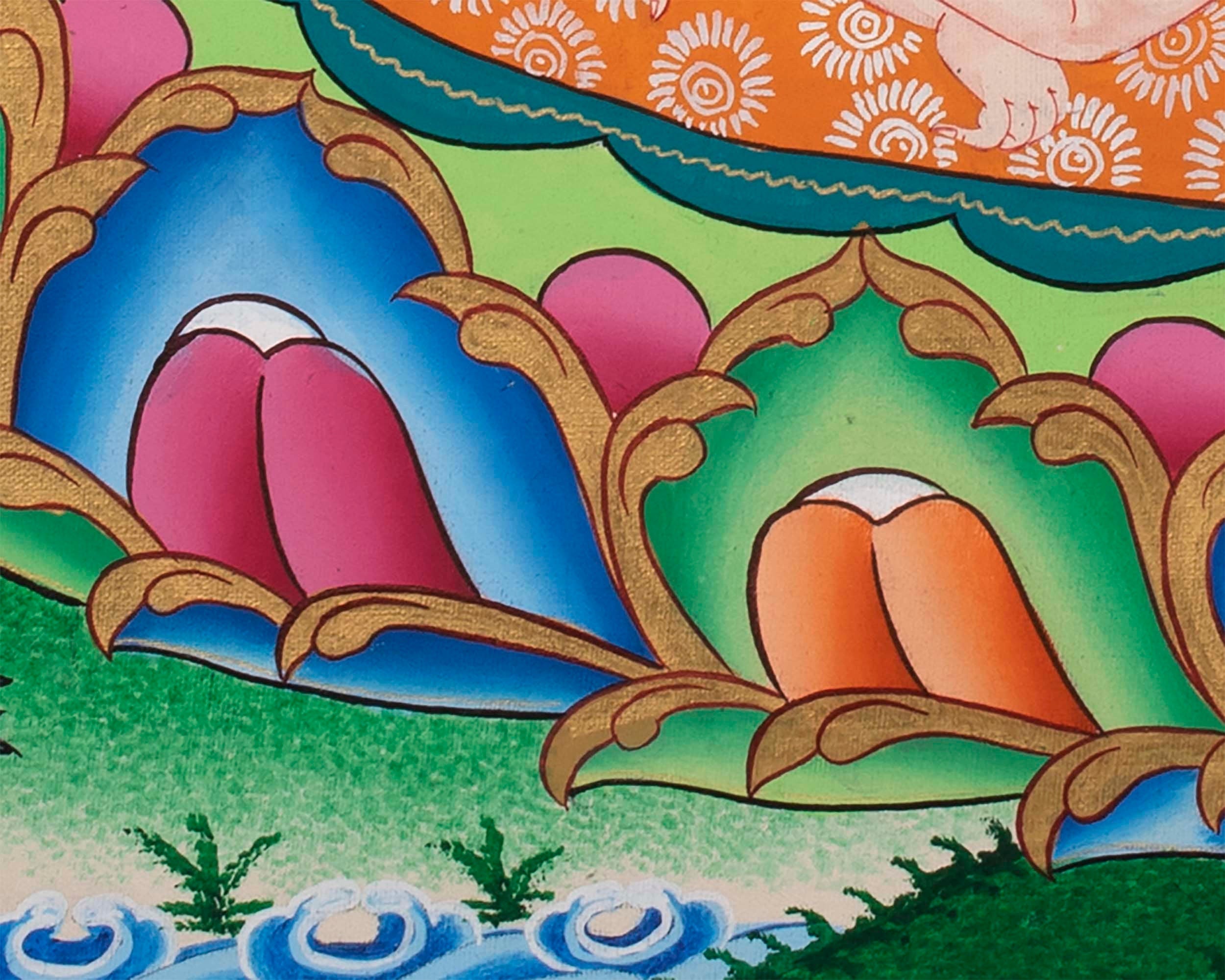Description
Sakya Mahakala Thangka
About Our Thangka :
Our thangka is a handpainted Tibetan art done using traditional methods. It is a unique piece created using genuine 24K gold and natural stone colors.
Introduction to Mahakala
Mahakala looks wrathful and is bedecked with serpents. He wears a garland of severed heads and a crown of five skulls , which represents five poisons of delusions namely lust , hatred , ignorance , pride and jealousy transformed into the wisdom of five Buddhas . His right hand holds a kartri symbolizing that he has cut off ego , clinging , and attachment . His left hand holds a kapala filled with blood symbolizing the subjugation of the evil . Since , there are many forms of Mahakala such as two armed , four armed and multiple armed ; the deity holds different objects according to it’s different manifestations . He also wears a tiger skin symbolizing the purification of desires . He has three eyes symbolizing his clear comprehension of Three times . He looks ferocious against a background of blazing fire .
His two feet symbolize wisdom and method . His ferocious appearance aside , Mahakala is a manifestation of Avalokiteshvara , the embodiment of universal compassion .
In this Tibetan art form, he is portrayed carrying a wooden gong(Gandhi), skull bowl, and vajra holder. Sakya Mahakala, also known as Gonpo Panjarnatha, is the most popular guardian of the Sakya sect.
-----------------------------------------------------------------Size: 15"/ 38 cm (width) x 20"/ 50 cm (height)
Materials: Cotton Canvas, Acrylic Colors, Genuine 24K Gold
------------------------------------------------------------------
THIS THANGKA IS HAND-PAINTED IN THE TRADITIONAL STYLE AND THE QUALITY IS HIGH
How does mold damage a Thangka ?
A humid room without air circulation is the perfect environment for mold growth. If a thangka in such a room becomes damp or wet, mold will grow on it. This growth can badly damage the cloth, the pigment, and the binder. Molds form a fuzzy coating on the thangka.










